Being the sole caretaker of my animals, it is my responsibility to give my pregnant girls the absolute best care possible to ensure a healthy pregnancy and the easiest delivery possible. It is a responsibility that I also happen to take very seriously. Now, with that being said, sometimes despite how far above and beyond you go with your care, stuff just happens that’s out of your control. This is a hard lesson I learned this year with my first farrowing. But, the best thing you can possibly do for a healthy doe and kids is to give mom the best care possible during her pregnancy.
Some of the care comes towards the end of the pregnancy, while some is just general health and responsibly caring for your doe before being bred. Once a dairy goat is of breeding age, at any given point throughout the year she is either pregnant, lactating, or both. Each require a certain level of care to maintain health and body condition.
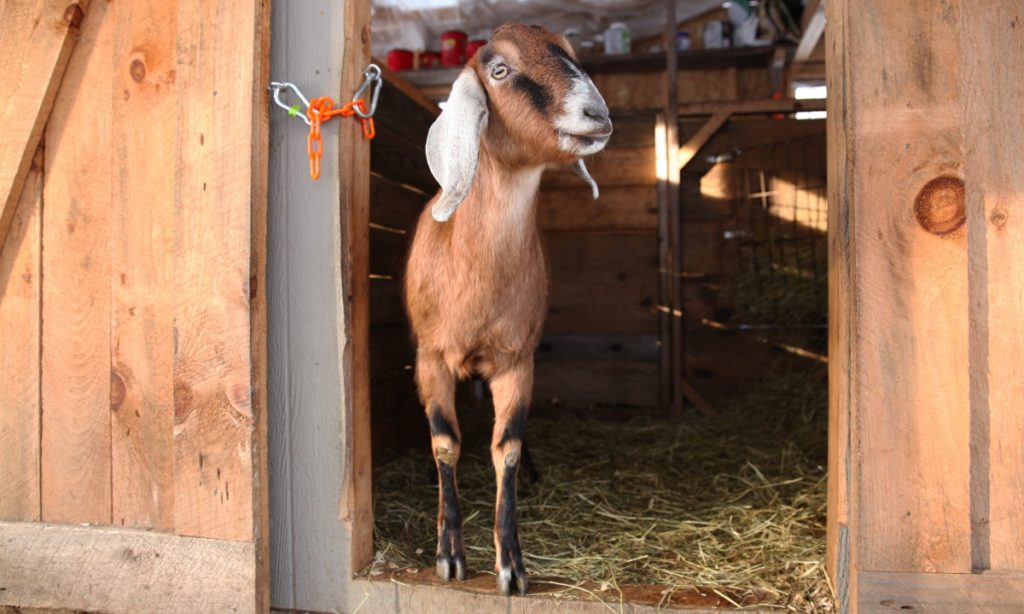
Body Condition & General Health
Before your doe is even bred, she should be in good body condition not only for the best chance of the pregnancy settling but for her health as well. A good body condition is an ideal balance of fat and muscle. There are various things that can affect body condition above and beyond over and under feeding. Age, parasites, disease, whether the doe has ever been bred, and the point in her lactation cycle can all have an effect. Too thin is equally as detrimental as too heavy, and can lead to fertility issues, pregnancy toxemia/ketosis, labor difficulties, and higher risk of kid mortality. Being in good body condition will set her up for as healthy of a pregnancy as possible, meaning healthier kids and stronger milk production. If you are unsure how to determine your dairy goat’s body condition score, here is a great video that goes over the scoring system. Whether you’re doing linear appraisal or not, this video will show you what to look for to determine if your doe is too heavy, too thin, or just right.
In addition to body condition, careful attention should be taken to provide any additional supplements she may be deficient in. Being deficient in certain vitamins and minerals can affect fertility and stillborn rates, and sometimes feed and loose minerals isn’t enough. I personally live in a selenium and copper deficient area of the country, so as a preventative measure I give my entire herd a dose of Replamin Gel Plus weekly. It includes many essential vitamins and minerals in addition to the selenium and copper we are deficient in. Administering this weekly has made a huge difference in the thickness and quality of their coats, skin health, and has prevented fertility issues due to providing the much needed selenium and copper naturally lacking. Before breeding season, I recommend that you look into what your area may be deficient in and handle accordingly to prevent potential issues. Whether it be a weekly supplement or a shot your vet can administer, it is worth looking into.
Feeding
Providing your doe with a proper diet is a delicate balance. There are so many variables including quality of hay and grain, breed, and size of the goat. With so many different types of grain and brands, not to mention hay quality, all I can do is speak to what I do here.
I feed out organic second cut hay, and my backup is organic early first cut. These cuttings have the highest nutrient content possible and I fill their hay feeders both morning and at night. Easy enough right? If only…
Throughout the winter regardless of pregnancy, for my winter care regimen (but it just so happens winter is when everyone is pregnant anyway) I also feed out one cup of New Country Organics Goat Pellets to each doe every night. Because they like to bounce around from dish to dish, starting at about six weeks out from her due date I will feed the expecting mother on the milk stand separately. Not only does this get her into the habit of getting on the stand again, but it ensures that she is getting all the grain for her growing babies. When she has a month to go before kidding, I up the grain to one and a half to two cups to accommodate for the rapid growth the kids are going through at this point in gestation.
Grain is a bit of a hot topic issue. Depending on who you ask you will get different opinions on what (if any) grain to feed out during pregnancy and how much. Some swear by feeding out alfalfa pellets late in gestation for additional calcium to aid in labor and milk production, while others say absolutely not due to hypocalcemia. I have found goats to be incredibly tricky as there is a lot of conflicting information out there depending on who you ask.
Regardless of this, pregnancy toxemia is a risk if excessive grain is given during the final month of pregnancy, while ketosis can happen after kidding if not given enough grain. Like I said, it’s a balance! It can be difficult to maintain, but keeping an eye on body condition late in gestation and getting to know your goat’s body will help you determine if she’s getting enough or too much to eat.
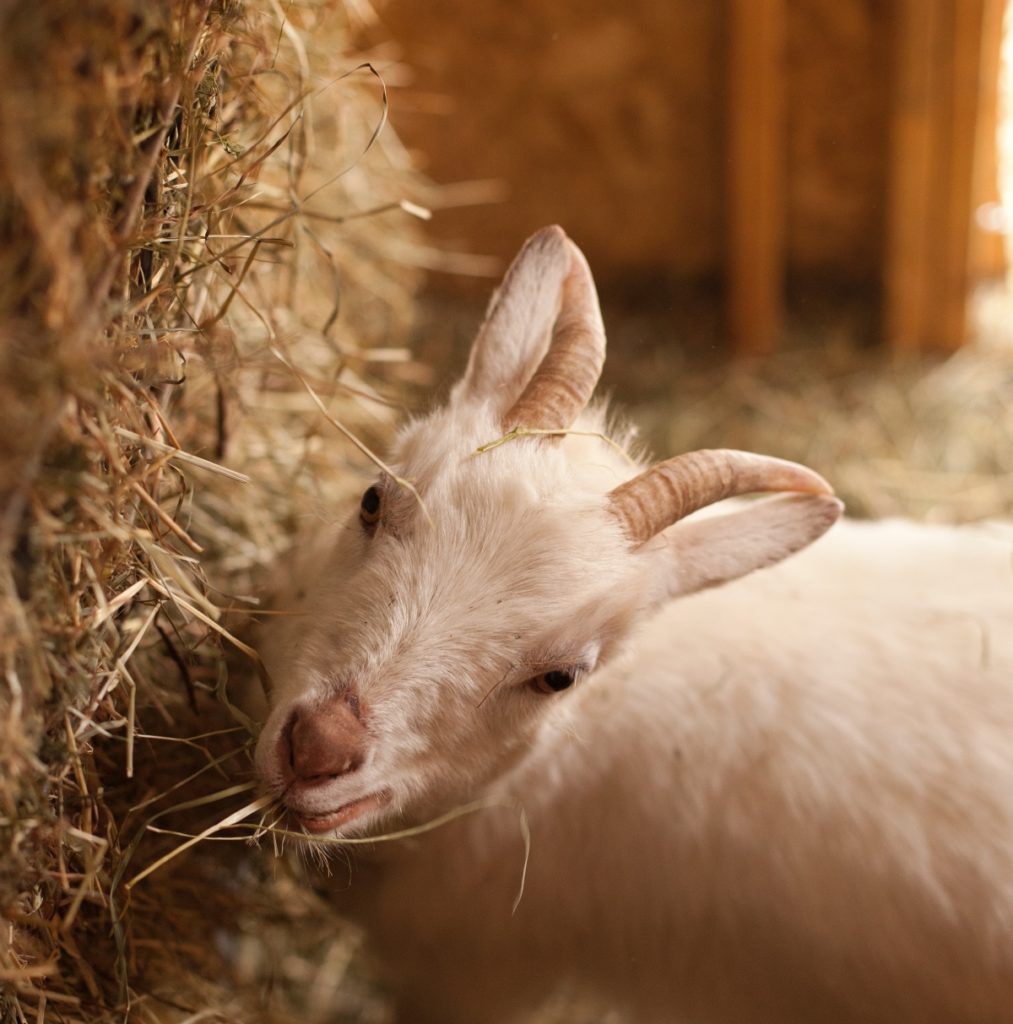
Herbal Supplements
Once I start feeding the expectant mother on the milk stand six weeks before her due date I start top dressing 1/4 cup of Molly’s Herbals Pregnancy Tonic on her feed as well. This natural herbal supplement containing red raspberry leaf, alfalfa, rose hips, fennel, and cinnamon has huge benefits to a pregnant doe and I swear by it. Some of the benefits (straight from the site) include:
- Aid in preventing miscarriage and hemorrhage
- Aid in reducing pain during labor and after birth; by helping to tone the muscles used during labor and delivery.
- Strengthen the uterus
- Aid in providing a safe and speedy birth; helps to encourage the uterus to let go and function without tension. This does not strengthen contractions, but does allow the contracting uterus to work more effectively and so make the birth easier and faster.
- Aid in colostrum / milk production and quality.
- When consumed after birth, this Pregnancy Tonic may help decrease uterine swelling and cut down on post partum bleeding.
- Supplies Vitamins A, Bs, C, E, K, D. High in Calcium and contains phosphorus, iron. potassium and enzymes and trace minerals.
I used tonic last year throughout the last trimester of my doe Karen’s pregnancy. She had a textbook kidding in every way imaginable. Her labor was quick, she quickly released the placenta, and there was minimal post partum bleeding. I largely thank the Molly’s Herbals for this, and will always feed it to my pregnant does!
Shave Her Up
Shortly before kidding you will want to give your does udder, backs of legs, and vulva area a thorough shaving with an electric razor. Not only will this make clean up easier after birthing, but a clean shaved udder will make it easier for the kids to nurse and easily find the teats.
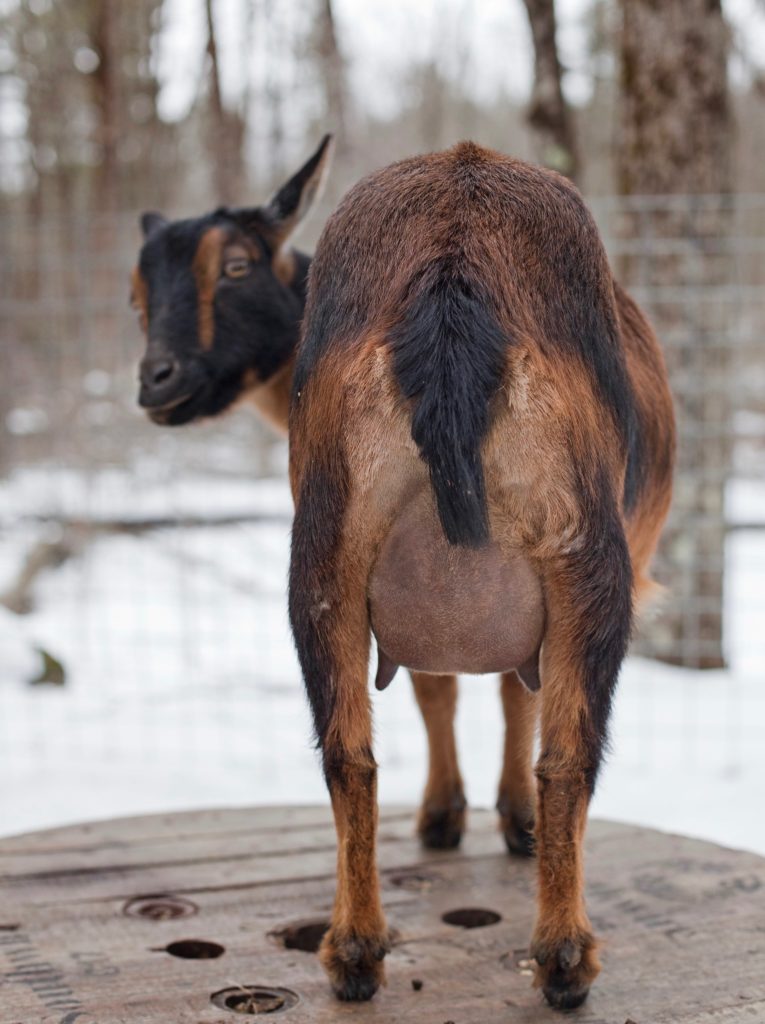
I have maintained (and still do!) that dairy goats are some of the most difficult animals to keep. They can be so delicate yet tough at the same time, and so many things can go wrong during pregnancy, kidding, and with milk production. There is conflicting information everywhere you turn, and it can be extremely frustrating. But, once you have a reliable grain, hay, and supplement regimen you figure out a rhythm that works for you. Feeding quality feed is the best you can do just like with any other animal. But, I also believe that what works and what doesn’t work largely is affected by animals living conditions, as well as the area of the country you live in and its deficiencies.
All of the care I mentioned above is what I do, and what I learned from my friend and amazing goat mentor Angela with some of my own research. This works for me and gives my herd the best chance possible at a healthy pregnancy and kids! Do you give special care/ treatment/ feeding/ supplements to your pregnant does? Let’s hear what you do below!
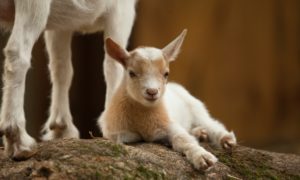
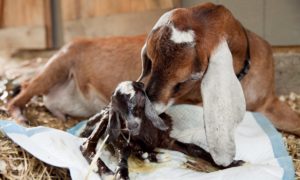
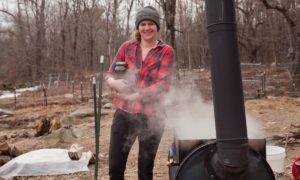
Pingback: Is My Goat Going to Kid Soon? – Signs of Goat Labor – The Modern Day Settler
Pingback: What Do You Do When Goat Kids Are Born? - The Modern Day Settler